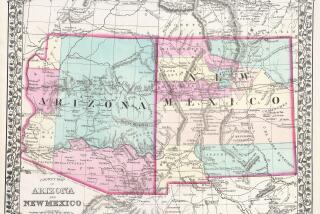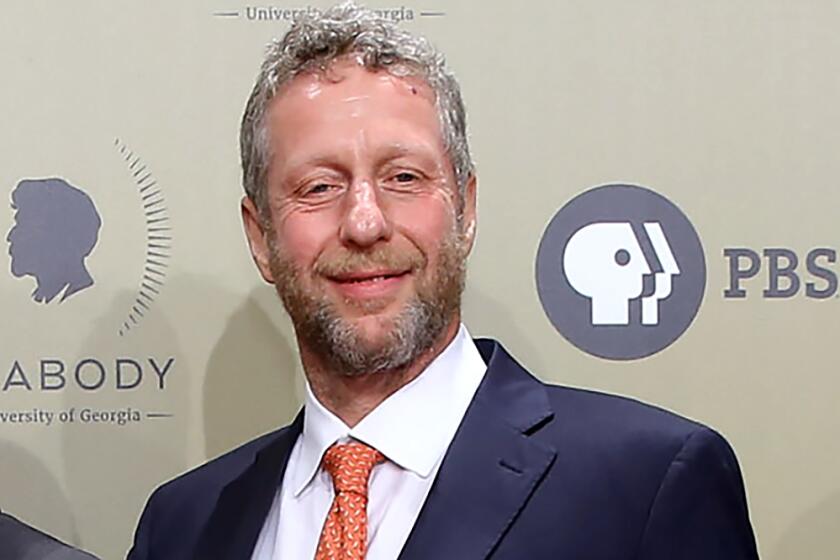EPA’s 9/11 Air Ratings Distorted, Report Says
In the days after the terrorist attack on the World Trade Center, White House officials persuaded the Environmental Protection Agency to minimize its assessment of the dangers posed by airborne dust and debris from the skyscrapers’ collapse, according to an internal agency report.
The White House Council on Environmental Quality “convinced EPA to add reassuring statements and delete cautionary ones” from news releases, said the report by the EPA’s inspector general office, an internal watchdog.
For instance, a draft EPA news release for Sept. 16, 2001, warned that the air near the attack site could contain higher levels of asbestos, a carcinogen, than is considered safe.
After input from the White House environmental council, the release as issued by the EPA said the asbestos levels met government standards and were “not a cause for public concern.”
The report also concluded that the EPA lacked sufficient data and analyses when, on Sept. 18, it announced that the air in Lower Manhattan was safe to breathe.
At the time, air-monitoring data was not yet available for pollutants such as particulate matter and polychlorinated biphenyls, or PCBs, the report stated.
It said the EPA should have qualified its assertion, warning that the air was not safe for children, the elderly or cleanup workers at the site that became known as ground zero. Also, while outdoor air in the surrounding area was safe, indoor air was not, the report said.
The report, released late Thursday, said “competing considerations, such as national security concerns and the desire to reopen Wall Street, also played a role in EPA’s air quality statements.”
But White House and EPA officials said Friday that in the immediate aftermath of the terrorist attacks, public health was their prime concern as they worked together to provide the most responsible advice in an extraordinarily chaotic situation.
“We were trying to quickly get out the best information we could so that people didn’t overreact and also so people didn’t underreact,” said James Connaughton, chairman of the White House Council on Environmental Quality. The council coordinates environmental policy throughout the administration.
A New York lawmaker charged that the White House hid crucial information that could have helped residents and workers protect their health.
“EPA officials lied when they initially were telling people that the air was safe,” said Democratic Rep. Jerrold Nadler, whose district includes the attack site. “That’s an outrage.”
But acting EPA Administrator Marianne L. Horinko, who was involved in the Sept. 11 response, said the inspector general’s report “trivialized a national emergency and focused on nits.”
Horinko said she “vehemently” disagreed with the report’s assessment, saying that EPA officials used their best professional judgment and the best science available when declaring the air safe.
“As soon as you have data you should tell the public what that data is, and what the data are telling you,” Horinko said. “Even in the early days, the data were telling us that the vast majority of people were not going to have serious problems.”
After terrorists flew hijacked jets into the World Trade Center and toppled its twin towers, dust, debris and smoke filled the air in Lower Manhattan, inundating buildings, stinging eyes and searing lungs.
The immense scale and reach of the acrid plume raised fears of possible widespread health risks from asbestos, lead, concrete dust and a variety of other chemicals.
The EPA played a key role in assessing the health risks posed by the dust and soot, and the agency has continued to oversee the cleanup.
Nadler, other New York officials and public health activists have consistently criticized the EPA for underestimating the risks and failing to do enough to protect public health. Those critics say the inspector general’s report was confirmation from inside the EPA that their concerns were valid.
According to the report, the White House had a role from the start in shaping EPA statements after the Sept. 11 attacks. On Sept. 12, the EPA deputy administrator sent an e-mail to senior agency officials stating that “all statements to the media should be cleared through the [National Security Council] before they are released,” according to the report.
An official at the White House Council on Environmental Quality was designated to help the EPA obtain such clearance.
Examples of White House influence on the EPA’s public messages included advice given to those living close to the World Trade Center, according to the new report.
EPA officials were said to believe the nearby residences should be cleaned by professional crews, but the agency’s news release did not include such instructions.
When asked about it, an associate EPA administrator said: “It was in a press release; it was removed by” the official with the environmental quality council, according to the report.
In another example, the report said a draft EPA news release for Sept. 13 warned that “even at low levels, EPA considers asbestos hazardous in this situation.”
After the White House suggested changes, the release as issued read: “short-term, low-level exposure of the type that might have been produced by the collapse of the World Trade Center buildings is unlikely to cause significant health effects.”
The report also criticizes the EPA for failing to more actively address indoor air pollution. The dust settled in furniture, curtains, rugs and air vents in nearby buildings.
Many months after the attacks, residents continued to complain of health problems such as chronic coughs, which health experts say were caused by corrosive concrete dust, ground glass and other lung irritants.
Nina Lavin, a jewelry designer who lives in Lower Manhattan, developed chronic bronchitis and moved into a hotel for 10 months after high levels of asbestos were detected in her apartment. She said Friday she was not surprised by the EPA inspector general’s conclusions.
“You couldn’t be in this neighborhood at the time and think the air was OK,” Lavin said. “I am grateful that the report has, against all odds, come out revealing some of the truth.”
Although her apartment was cleaned, the EPA refused to scrub the ventilation system in the 460-unit building, she said.
Nikki L. Tinsley, the EPA inspector general, said the main aim of the report was to learn from mistakes to ensure an improved agency response in the event of future large-scale terrorist attacks.
There have not been any major studies of the health effects on the general public of the pollution caused by the collapse of the World Trade Center, according to the report.
However, New York City and federal health officials are studying residents and employees of Lower Manhattan to try to identify long-term lung effects.
Several studies have found that a high percentage of rescue workers and firefighters suffered from lung ailments and ear, nose and throat problems in the months after the attack.
Public health activists in New York were disappointed that the top EPA officials disputed the conclusions of the agency’s inspector general.
“It is troubling,” said Joel Shufro, executive director of the New York Committee for Occupational Safety and Health, an advocacy and training group. “There is still a significant amount of asbestos and heavy-metal contamination in Lower Manhattan, which should be cleaned up to protect public health.”
*
Times staff writer John J. Goldman in New York contributed to this report.
More to Read
Get the L.A. Times Politics newsletter
Deeply reported insights into legislation, politics and policy from Sacramento, Washington and beyond. In your inbox three times per week.
You may occasionally receive promotional content from the Los Angeles Times.






